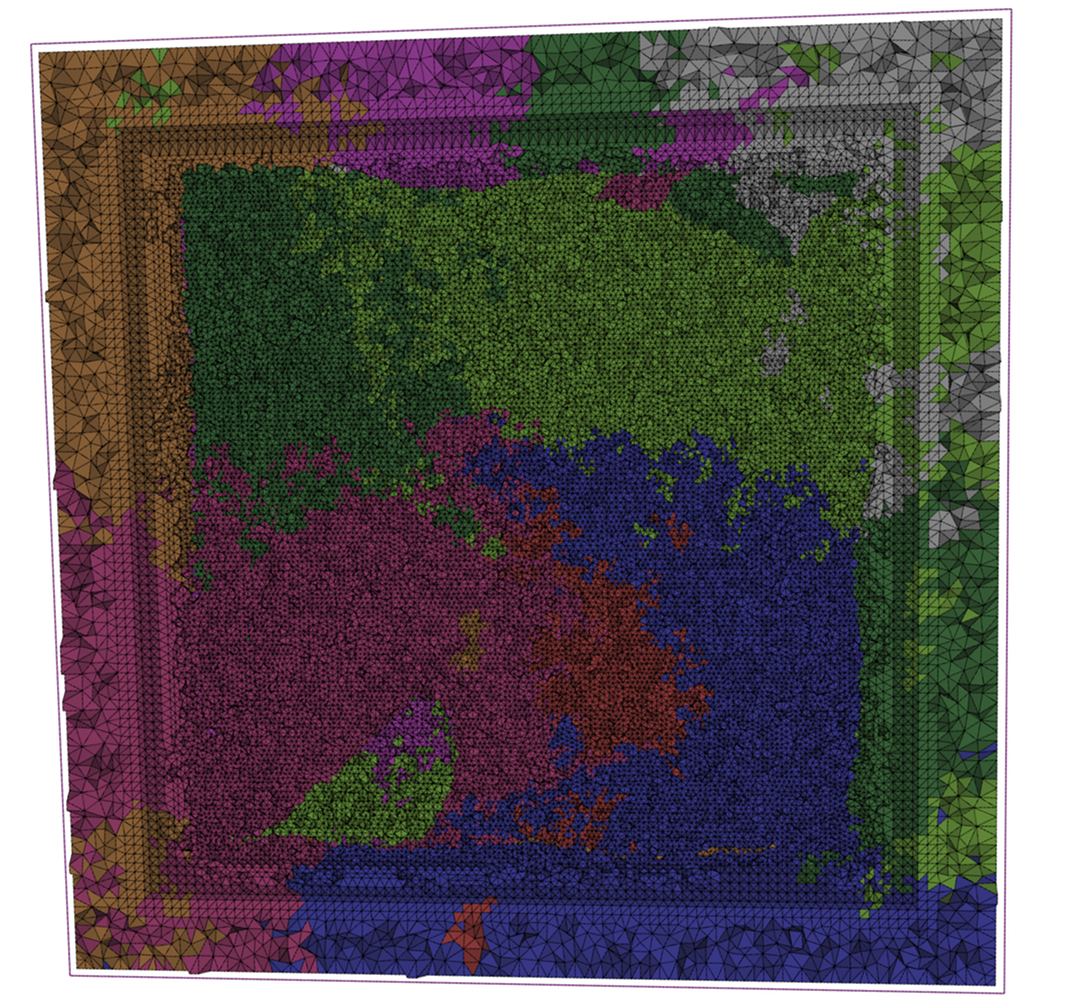Section: New Results
Parallel remeshing
Participants : Cécile Dobrzynski, Cédric Lachat, François Pellegrini [Corresponding member] .
All the work of the elapsed year on PaMPA concentrated on the design and implementation of parallel remeshing algorithms (see Section 5.6 for more details about the software itself). These algorithms are based on several steps: (i) identification of the areas to remesh; (ii) splitting of these areas into zones of prescribed size and/or estimated workload; (iii) redistribution and centralization of as many zones as possible on the processors; (iv) sequential remeshing of the zones; (v) reintegration of the zones to their original locations; (vi) identification of the remaining areas and loop to step (ii) when work remains.
Several splitting algorithms have been designed and evaluated, so as to provide zones with adequate aspect ratios to the sequential partitioners. Load imbalance is still a concern, since zones must not be too small, while they must be numerous enough so as to maximize concurrency across all of the available processors.
As of December, PaMPA has been able to remesh a coarse mesh of 27 millions of tetraedra up to a fine mesh comprising more than 600 millions of tetraedra, in 34 minutes, on 240 processors of the Avakas cluster at MCIA Bordeaux, using the MMG3D sequential remesher. Remeshing up to a finer mesh of above one billion of elements is the next milestone to reach, to evidence the capabilities of the software.
Cédric Lachat defended his PhD last December. A first abstract has been submitted, and two more journal papers are in preparation.


